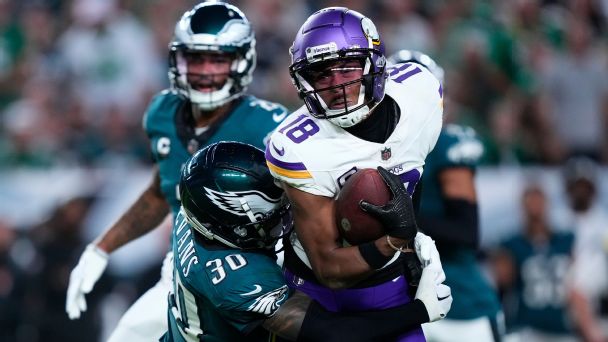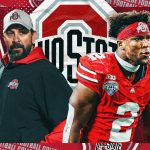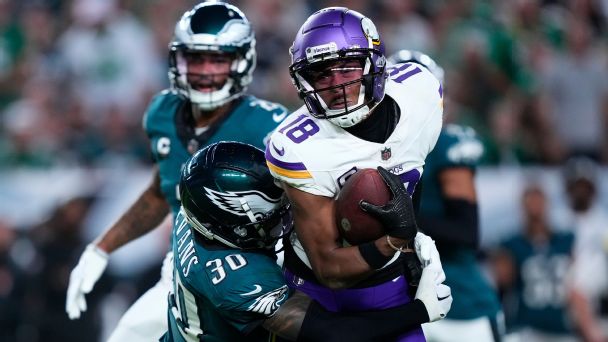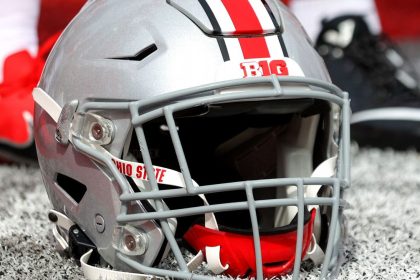
EAGAN, Minn. — An unusual development materialized for the Minnesota Vikings this year, at different times and for different reasons: Three of their best players all entered the season with unsettled contract situations.
We can now add an initial update: All three of them have produced strong individual starts to the 2023 season. Two weeks in, receiver Justin Jefferson leads the NFL in receiving yards. Linebacker Danielle Hunter is tied for the league lead in sacks and quarterback Kirk Cousins ranks No. 6 overall in Total Quarterback Rating (QBR).
Jefferson, Hunter and Cousins were the Vikings’ three representatives in ESPN’s annual NFL Rank project of the league’s top 100 players for 2023. Their efforts haven’t been enough to prevent an 0-2 start, but the impact of their performance on the future — especially in the cases of Hunter and Cousins — will be especially relevant as the regular season progresses.
Let’s take a closer look at what each player’s start to the season could mean.
WR Justin Jefferson
ESPN NFL Rank placement: No. 2
Contract details: Jefferson became eligible for an extension this spring, following his third NFL season, but the sides ultimately tabled talks earlier this month. As a result, Jefferson is playing under a rookie deal that pays him $2.4 million for 2023. He would earn $19.7 million next season on his fifth-year option. Both are well below the current market of $30 million per year for top NFL receivers.
What he’s done through Week 2: Jefferson has produced a league-high 309 receiving yards, a pace that would break Calvin Johnson’s NFL record for receiving yards in a season (1,964) by Week 13. His 20 receptions are the league’s second-best, and nearly half have gone for at least 20 yards. Still only 24, Jefferson has played all but one of the Vikings’ 119 offensive snaps and has run more routes (91) than any other NFL receiver.
“I think our coaching staff deserves a lot of credit for being very creative and intelligent with how to use him,” Cousins said. “You try to take advantage based on coverage. Sometimes I can’t work him and I am moving on, but there are other times where you say ‘Yes, they are aware of him, but I can still make the throw.'”
Although he hasn’t scored, it’s not difficult to see his influence on some of his teammates’ touchdowns. Rookie Jordan Addison got open for a 39-yard score in Week 1 when two defenders followed Jefferson and a third — a safety who had responsibility for Addison deep — had his eyes on him as well. In Week 2, receiver K.J. Osborn was wide open in one corner of the end zone when four defenders chased Jefferson in the other direction.
What it means: A slow start would not have damaged Jefferson’s value nor his status as one of the NFL’s top players. And he remains a long way from sniffing the leverage of a trip to free agency, as the Vikings could use the franchise tag on him in 2025 and 2026.
But close observers can see that he has elevated his game while also playing with a heightened competitive edge. Jefferson is fighting his way through consistent double-teams, aided by some of coach Kevin O’Connell’s play designs, and Cousins has relentlessly targeted him.
“His overall football understanding of how he’s being defended, I don’t know if I’ve seen anything like it,” O’Connell said.
It’s not hard to imagine Jefferson and his agents seeking an additional multiple of their most recent numbers whenever the sides return to the bargaining table.
LB Danielle Hunter
ESPN NFL Rank placement: No. 81
Contract details: The Vikings gave Hunter a one-year adjustment on July 31 to end his “hold-in” from training camp, raising his guaranteed compensation to $15.5 million with a chance to earn another $1.5 million in game-day roster bonuses. There are also another $3 million in incentives based on sack totals that would bring him to a maximum of $20 million. As part of the deal, the Vikings agreed not to use the franchise or transition tags in 2024, giving him a clear path to free agency in March.
What he’s done through Week 2: Hunter has four sacks, tied with the Pittsburgh Steelers‘ T.J. Watt for the league lead. Sacks don’t typically tell the full story of a pass-rusher, so it’s worth noting that Hunter also has a solid pressure rate of 14%, which ranks No. 22 among all NFL pass-rushers.
Three of his sacks have come when defensive coordinator Brian Flores dropped eight players into coverage, in each instance leaving five offensive linemen to block Hunter and two other Vikings pass-rushers. And true to his word, Flores has minimized the plays where Hunter must drop into coverage from his outside linebacker position. It has happened three times in 129 defensive snaps, for a rate of 2.3%.
What it means: Again, sacks are not the only measure of pass-rush impact. Regardless, Hunter won’t average two sacks per game for the remainder of the season. His pace will slow down.
Even if he manages only six more sacks over the next 15 games, he’ll reach 10 for the season. It’s relatively rare for a player coming off a double-digit sack season to reach free agency at all. Hunter would be doing so after consecutive 10-plus-sack seasons, a strong response to the injury-shortened years he experienced in 2020 and 2021, and would still only be 29 years old. There’s a long way to go, and perhaps the Vikings will get trade offers if their season doesn’t turn around. But Hunter has started the process of positioning himself for a massive payday — from the Vikings or another team — next spring.
QB Kirk Cousins
ESPN NFL Rank placement: 94
Contract details: Cousins will earn $30 million this season, after which the remainder of his deal will automatically void and leave a dead money charge of $28 million on the Vikings’ ledger. Because the void will occur after the 2024 deadline for applying the franchise tag, Cousins has a guaranteed path to the free-agent market unless he and the Vikings reach a new agreement before then.
What he’s done through Week 2: Based on his QBR (71.6), Cousins is off to the best two-game start of his career. That rating factors in four turnovers, including three lost fumbles.
Cousins is tied for the NFL lead with six touchdown passes, ranks second with 708 passing yards and third with a 72.7% completion percentage. He has done it alongside the NFL’s most anemic running game, and while absorbing a league-high 15 hits on passing plays. Cousins also deserves some credit for pushing the ball at every opportunity to Jefferson, who is tied for second among NFL receivers in targets (24) despite the attention defenses are paying him.
What it means: At the very least, Cousins is not going to go quietly. If he manages anything close to this level of play for the remainder of the season, how could the Vikings expect to find someone who would play at a higher level in 2024? And if they still move on, are they prepared to take a step back offensively with a (presumably) less productive quarterback?
Cousins’ performance will also impact his options this spring. He has said that he hopes to finish his career in Minnesota, but if finishes the season in, say, the NFL’s top 10 in QBR, he could generate a bidding war in free agency. How high would the Vikings go?
Regardless, early indications are that Cousins has embraced his unique situation.
“My perspective will be to just enjoy the fight,” he said. “Enjoy the challenge that it is every week. And I think I’m wired in a way to be able to do that, so that’s just what I want to lean into.”












